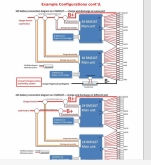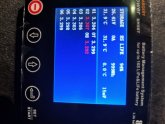I have been up all night working on the driver that Tobi17 produced. he gave me a big head start. It needed a few tweaks though:
It needed an installer
it was hardcoded to ttyUSB0 - there may be more than one device connected to the venus device, so not quite plug and play. It may not find itself on ttyUSB0, so the driver will be looking there, yet the device is on some other port, such as ttyUSB1,2 etc.
To fix plug and play, I added some code so when it is pugged in, it creates a copy of itself on ttyCHG1, so no matter if it appears on ttyUSB0 or ttyUSB99, it'll still appear on ttyCHG1 (stands for Chargery port 1). I then changed the driver and qml pages to reference this port. Boom! Plug and Play

The installer I made is a simple bach script. It:
copies the files and folders into the right place
adds the required lines to some configuration files
adds the magic that creates the symbolic link to ttyCHG1 from whatever port it appears on.
All one needs to do is load up windows, use FT_PROG to reprogram an FT232RL device to have a name of "CHARGERY BMS" and flip on TX inversion and they are good to go.
Changing the model name of the device still allows it to be used with windows or other computer (like my mac). This avoids having to edit inf files or kexts etc to get the device to be able to be used as a normal FT232RL device or for simply troubleshooting the cable/bms's serial port before connecting to the venus device.
Will git hub it later. as I said, I've been up all night and need to get some sleep the collaborate with Tobi17, to pass on my additions, and be added to his github as a contributer.




